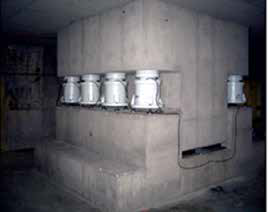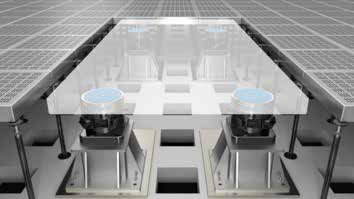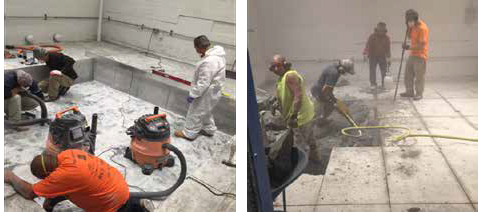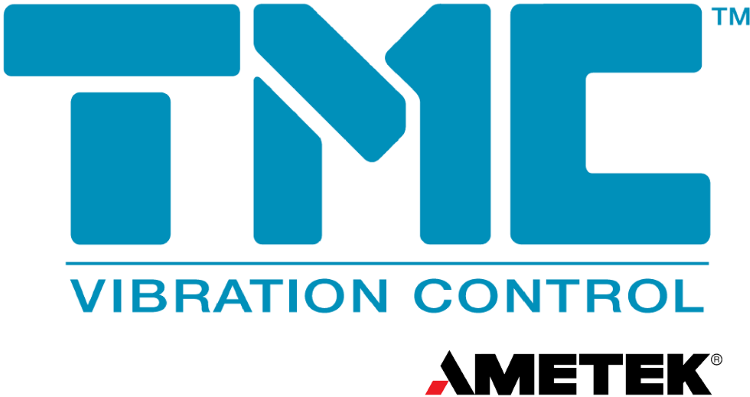In addition to delivering exceptional levels of floor vibration isolation, STACIS Quiet Islands® offer an eco-friendly strategy for architectural design in advanced research facilities.
In the ever-advancing landscape of science and technology, scientists and engineers are fashioning patterns and images at an ever smaller scale, pushing the boundaries into the realm of nanometers and beyond.
Achieving this demands, among various prerequisites, the maintenance of remarkably quiet building floor vibration levels so as not to disturb the instruments, experiments, and nanoscale manufacturing processes.
One commom approach involves designing structures to provide quieter vibration levels. However, this necessitates increased levels of steel and concrete.
The quieter the desired building, the greater the amount of steel and concrete used; even slight enhancements in vibration performance demand substantial increments in these materials. Ultimately, this strategy becomes impractical, as a building cannot establish a vibration environment quieter than the ground beneath it.

Large, dedicated, poured-in-place concrete plinth. Image Credit: TMC Vibration Control
Large concrete "plinths" are often employed to uphold delicate equipment at specific points within the edifice. These plinths are upheld by air isolators, rubber mounts, or alternative materials aimed at isolating vibrations.
Concrete is a major contributor to greenhouse gas emissions, accounting for roughly 8% of carbon dioxide discharged into the atmosphere — an unexpectedly substantial proportion.
Not only does the plinth approach progressively fall short in ensuring the indispensably tranquil vibration levels, but these plinths present "one-time" remedies that are nearly impossible to move and have to be removed using jackhammers, only to be replaced as requisites evolve.
Beyond offering superior performance, Quiet Islands embrace a more sustainable and environmentally-conscious strategy for controlling floor vibration. They are portable, reusable, and recyclable, requiring less concrete, energy, and resources, thereby emitting less CO2 into the atmosphere.

TMC Quiet Island. Image Credit: TMC Vibration Control

The poured concrete plinth does not accommodate changing needs. Image Credit: TMC Vibration Control

This information has been sourced, reviewed and adapted from materials provided by TMC Vibration Control.
For more information on this source, please visit TMC Vibration Control.